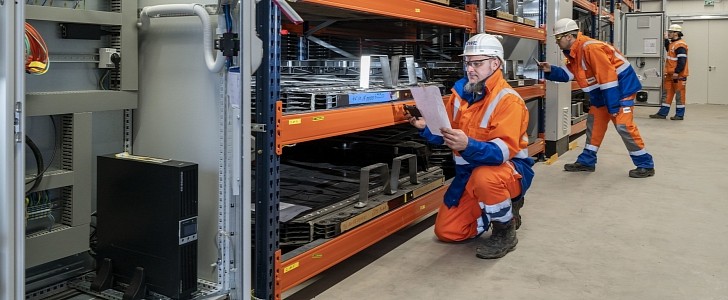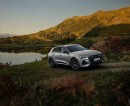Putting used battery packs to work as stationary energy storage systems is nothing new. BMW did that in Brazil to create solar charging stations with used i3 battery packs. Audi and RWE announced doing that on December 22, but the real news here is that all 60 used battery packs came from “development vehicles” used to create the e-tron.
These battery packs are all above 80% capacity. Audi covers them for eight years or 160,000 km (100,000 miles), whatever happens first. Curiously, the company does not mention battery capacity in the warranty terms and does not include a minimum range or capacity for its battery packs. The company probably used them because it scrapped the prototypes.
The amount of vehicles involved with the development process makes it inevitable to compare what legacy automakers do to Tesla’s methods. The company recently announced a massive recall affecting almost all Model 3 units due to a design flaw related to the rear camera wiring. More extensive testing would have prevented that. Tesla is also facing heating issues with heat-pump-equipped vehicles, allegedly due to an OTA update that it did not sufficiently test.
Back to Audi, the German automaker gave the 60 used battery packs a second life with RWE Generation SE, a German energy generation company. Instead of throwing away the battery packs or recycling them immediately, Audi delivered them to RWE, which placed the components in racks in a 160-square-meter (191.4-square-yards) hall. Each of the 700-kilograms (1,543-pounds) battery packs now has the goal of storing around 4.5 MWh. Trial operations started in November 2021, but Audi and RWE did not disclose the terms of their partnership.
The structure created with the 60 battery packs is located in Herdecke, Germany, where RWE has a pumped-storage power plant. In short, it stores energy by pumping water to a reservoir in high terrain. When this energy is needed, the reservoir releases this water, and generators convert the water flow into electricity, as regular hydropower plants do with rivers.
If the idea is successful, Audi could not only earn money with these used battery packs by leasing them to energy companies such as RWE: it could also control where its battery packs are. When their second lives are no longer possible, it can recycle them and make new cells. Audi estimates the 60 battery packs still have ten years of service lives depending on how they are used.
The amount of vehicles involved with the development process makes it inevitable to compare what legacy automakers do to Tesla’s methods. The company recently announced a massive recall affecting almost all Model 3 units due to a design flaw related to the rear camera wiring. More extensive testing would have prevented that. Tesla is also facing heating issues with heat-pump-equipped vehicles, allegedly due to an OTA update that it did not sufficiently test.
Back to Audi, the German automaker gave the 60 used battery packs a second life with RWE Generation SE, a German energy generation company. Instead of throwing away the battery packs or recycling them immediately, Audi delivered them to RWE, which placed the components in racks in a 160-square-meter (191.4-square-yards) hall. Each of the 700-kilograms (1,543-pounds) battery packs now has the goal of storing around 4.5 MWh. Trial operations started in November 2021, but Audi and RWE did not disclose the terms of their partnership.
The structure created with the 60 battery packs is located in Herdecke, Germany, where RWE has a pumped-storage power plant. In short, it stores energy by pumping water to a reservoir in high terrain. When this energy is needed, the reservoir releases this water, and generators convert the water flow into electricity, as regular hydropower plants do with rivers.
If the idea is successful, Audi could not only earn money with these used battery packs by leasing them to energy companies such as RWE: it could also control where its battery packs are. When their second lives are no longer possible, it can recycle them and make new cells. Audi estimates the 60 battery packs still have ten years of service lives depending on how they are used.









